When we observe birds soaring through the sky and alligators lurking in swamps, it’s hard to imagine that these vastly different creatures share a common ancestry. Yet, the evolutionary narrative connecting these animals is one of the most fascinating stories in vertebrate evolution. Both alligators and birds trace their lineage back to the archosaurs, a group of reptiles that dominated Earth during the Mesozoic Era and gave rise to dinosaurs. This shared heritage explains surprising anatomical and physiological similarities between these seemingly disparate animals, offering a remarkable window into evolution’s transformative power across 250 million years of Earth’s history.
The Archosaur Ancestry: Where It All Began

Approximately 250 million years ago, following the devastating Permian-Triassic extinction event that wiped out roughly 90% of marine species and 70% of terrestrial vertebrates, a group of reptiles known as archosaurs began to diversify. These “ruling reptiles” developed distinctive characteristics, including teeth set in sockets, specialized skull openings, and a unique ankle structure. As they evolved, the archosaur lineage split into two major branches: the pseudosuchians (which would eventually lead to modern crocodilians, including alligators) and the avemetatarsalians (which led to pterosaurs and dinosaurs, including birds). This divergence occurred approximately 245 million years ago during the Early Triassic period, setting the stage for the remarkable evolutionary journeys of both lines.
Crocodilian Evolution: The Survivor’s Tale
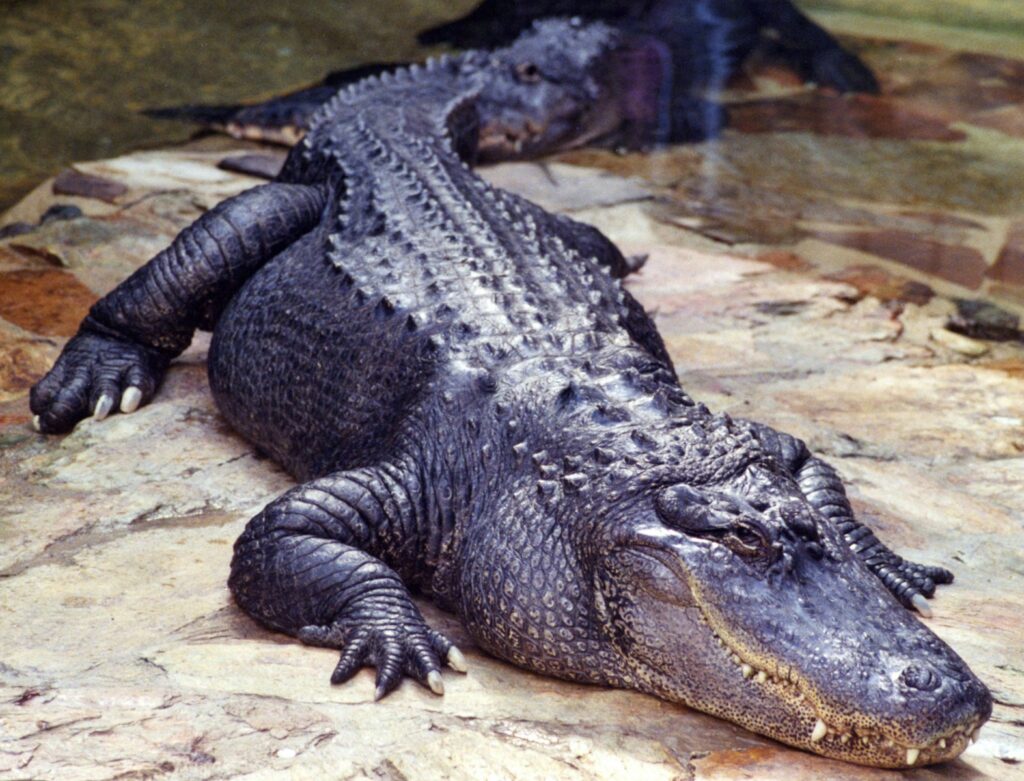
The pseudosuchian lineage that led to modern alligators and other crocodilians experienced significant evolutionary changes over time. Early pseudosuchians were typically terrestrial, and many were bipedal, quite unlike their modern descendants. Some ancient relatives, like Postosuchus, were top predators of their time and walked upright on land. Through natural selection, the line that would become today’s crocodilians gradually adapted to semi-aquatic lifestyles, developing the flattened bodies, powerful tails, and specialized skull features we recognize today. Remarkably, while many archosaur groups disappeared during major extinction events, crocodilians proved extraordinarily resilient, surviving the end-Triassic and end-Cretaceous mass extinctions with relatively minor changes to their basic body plan over the past 80 million years. Their evolutionary success story represents one of the most impressive examples of morphological conservation in vertebrate history.
From Dinosaurs to Birds: The Theropod Connection
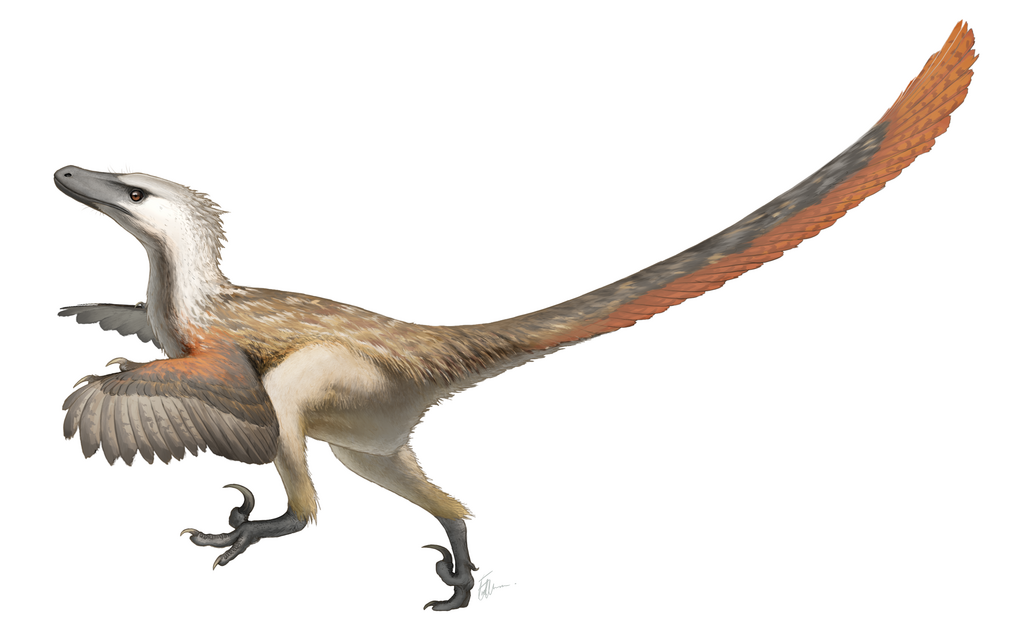
Birds evolved from a group of meat-eating dinosaurs called theropods, specifically from the maniraptoran branch of the theropod family tree. These dinosaurs, which included the famous Velociraptor, possessed features that would later prove essential for avian flight. The transition from ground-dwelling theropods to flying birds occurred gradually over tens of millions of years and involved a series of evolutionary innovations. Feathers, originally evolved for insulation or display, were co-opted for aerodynamic functions. Skeletal changes included lighter, hollow bones, fused clavicles forming a wishbone, and modifications to the wrist that would eventually allow the complex folding motion necessary for powered flight. The discovery of numerous feathered dinosaur fossils from China, including Archaeopteryx, Microraptor, and Yi qi, has provided compelling evidence of this transition and helped scientists understand the incremental steps that led from terrestrial dinosaurs to the diverse birds we see today.
Anatomical Clues: Skeletal Structures That Reveal Relationship
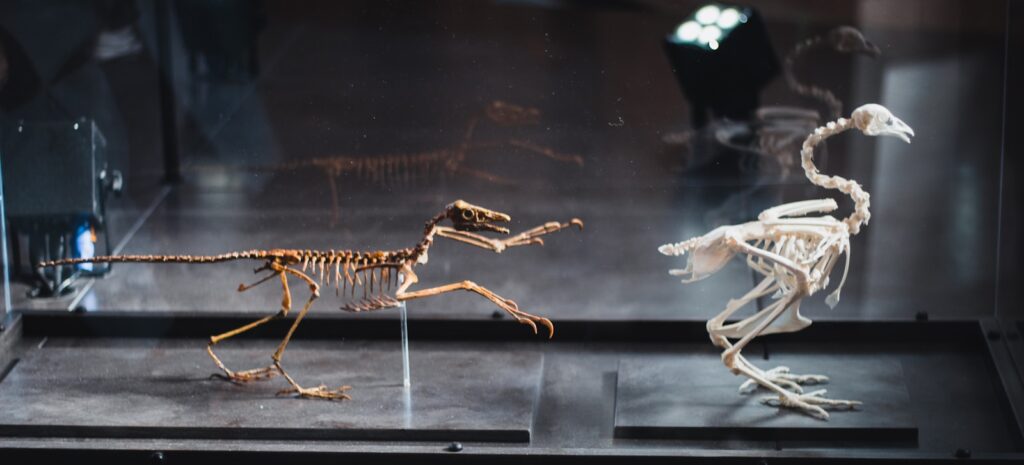
Despite their outward differences, alligators and birds share numerous skeletal features that betray their common ancestry. Both possess the distinctive archosaur skull with antorbital and mandibular fenestrae (openings in the skull that reduce weight and provide muscle attachment points). Their teeth are set in sockets rather than fused to the jaw as in many other reptiles. Both groups exhibit similar ankle structures with a mesotarsal joint, though birds have modified this feature significantly for their specialized locomotion. The internal structure of their long bones also shows similarities, with nutrient foramina (small holes for blood vessels) positioned in characteristic archosaur patterns. Perhaps most tellingly, both alligators and birds possess a four-chambered heart, a feature rare among reptiles but essential for the high-energy metabolism of birds and the diving adaptations of crocodilians. These shared anatomical traits, representing homologous structures inherited from common ancestors, provide strong evidence of their evolutionary relationship despite the dramatic specializations each lineage has undergone.
Genetic Evidence: DNA Confirms the Ancient Connection

Modern molecular techniques have provided powerful confirmation of the relationship between birds and crocodilians suggested by fossil and anatomical evidence. DNA analysis shows that birds and crocodilians share unique genetic markers and gene sequences that distinguish them from other reptiles like lizards and turtles. Phylogenomic studies analyzing thousands of genes across multiple species consistently place birds and crocodilians as each other’s closest living relatives, forming a group called Archosauria. The molecular clock technique, which uses DNA mutation rates to estimate divergence times, suggests that the lineages leading to modern birds and crocodilians separated approximately 240 million years ago, aligning well with the fossil record. Interestingly, certain developmental genes controlling limb and skull formation show remarkable conservation between these groups, explaining how certain archosaur traits have persisted despite dramatic morphological divergence. These genetic connections provide compelling evidence that birds and alligators share common ancestry despite their vastly different appearances and lifestyles.
Reproductive Similarities: Eggs, Nests, and Parental Care

Reproductive biology offers another window into the shared heritage of birds and alligators. Both groups lay amniotic eggs with hard shells, a characteristic inherited from their archosaur ancestors. The internal structure of these eggs shows remarkable similarities, including multiple membranes that protect and nourish the developing embryo. Both birds and alligators engage in nest-building behaviors, though their specific techniques differ. Perhaps most interestingly, both groups exhibit sophisticated parental care, with female alligators guarding their nests against predators and responding to the vocalizations of their hatchlings, much like many bird species. In both groups, vocalization plays a crucial role in parent-offspring communication. These reproductive and behavioral similarities reflect their common evolutionary heritage and represent complex traits inherited from archosaur ancestors that have been retained and refined over millions of years of separate evolution.
Metabolic Mysteries: Cold-Blooded vs. Warm-Blooded

One of the most significant differences between modern alligators and birds is their metabolic strategy – alligators are ectothermic (cold-blooded), while birds are endothermic (warm-blooded). This divergence represents a major evolutionary innovation in the lineage leading to birds. Fossil evidence suggests that increased metabolic rates evolved gradually in dinosaurs, with many theropods likely maintaining elevated body temperatures through some combination of internal heat production and large body size. Recent studies of bone microstructure and oxygen isotope ratios in fossils suggest that some non-avian dinosaurs may have had metabolic rates intermediate between modern reptiles and birds. Evidence from developmental biology indicates that the genes controlling metabolism in both lineages are homologous, suggesting that birds’ high-powered metabolism evolved through modifications to existing archosaur physiological systems rather than entirely new adaptations. This metabolic transition was crucial for supporting the energy-intensive lifestyle of birds, particularly powered flight, and represents one of the most significant divergences from their shared ancestral condition with alligators.
The Extinction Event: Who Survived and Why
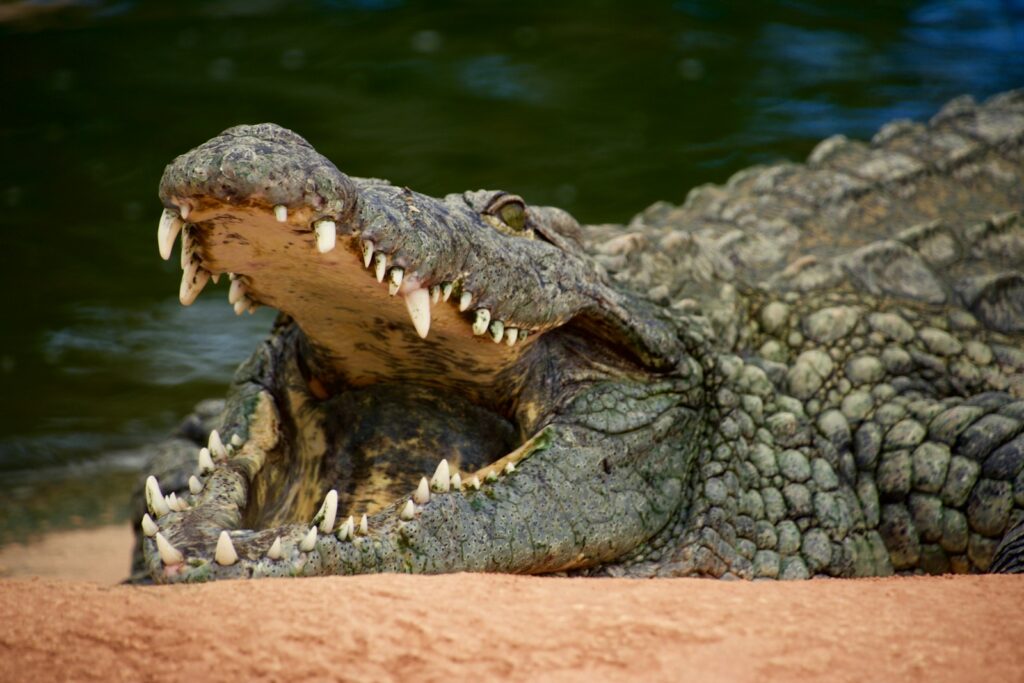
The Cretaceous-Paleogene (K-Pg) extinction event, approximately 66 million years ago, provides a fascinating chapter in the shared story of birds and crocodilians. This catastrophic event, caused by an asteroid impact and subsequent global environmental changes, eliminated all non-avian dinosaurs but remarkably spared some members of both the avian dinosaur and crocodilian lineages. Scientists believe crocodilians survived due to their semi-aquatic lifestyle, ability to remain submerged for long periods, and adaptation to consuming rotting carcasses – all traits that proved advantageous during the post-impact environmental collapse. Birds, meanwhile, likely survived due to their small size, seed-based diets, and potentially their ability to fly to less affected regions. Only a small subset of the diverse bird lineages that existed during the late Cretaceous survived, creating an evolutionary bottleneck from which all modern birds subsequently evolved. This shared experience of surviving a global catastrophe that eliminated most of their relatives represents another fascinating parallel in the evolutionary histories of these descendant archosaur groups.
Convergent Evolution: Different Solutions to Similar Problems

While birds and alligators share many traits due to common ancestry, they also exhibit fascinating examples of convergent evolution – the independent development of similar traits in response to similar environmental challenges. Both lineages have independently evolved sophisticated color vision systems that, while derived from common archosaur ancestors, have developed unique specializations. Similarly, both groups have independently evolved complex vocal communication systems, though the syrinx (vocal organ) of birds is an entirely different structure from the larynx used by alligators. Interestingly, both lineages have members that developed marine adaptations – marine crocodilians like Metriorhynchus and seabirds like penguins – with similar hydrodynamic body shapes despite different underlying anatomies. These examples of convergent evolution highlight how shared ancestral traits can provide the raw material for independent adaptations to similar ecological niches, even in lineages that diverged hundreds of millions of years ago.
Modern Classification: Organizing the Archosaur Family Tree

In modern taxonomic systems, birds and crocodilians (including alligators) are classified together in the clade Archosauria, reflecting their shared evolutionary history. Within this group, crocodilians fall within Pseudosuchia, while birds belong to Avemetatarsalia, which includes all dinosaurs and pterosaurs. Interestingly, modern birds (Aves) are classified as theropod dinosaurs in current phylogenetic classifications, making them the only living dinosaur descendants. This classification represents a significant shift from traditional taxonomic approaches that treated birds as a separate class from reptiles. The integration of fossil evidence, comparative anatomy, developmental biology, and molecular genetics has led to this more accurate representation of evolutionary relationships. Modern cladistic approaches emphasize that birds didn’t evolve “from” dinosaurs – they are dinosaurs, specifically highly specialized avian theropods that survived the K-Pg extinction event. This classification system accurately reflects the fact that alligators and birds are each other’s closest living relatives among extant vertebrates, despite their dramatically different appearances.
Archosaur Features in Modern Species: Hidden Connections
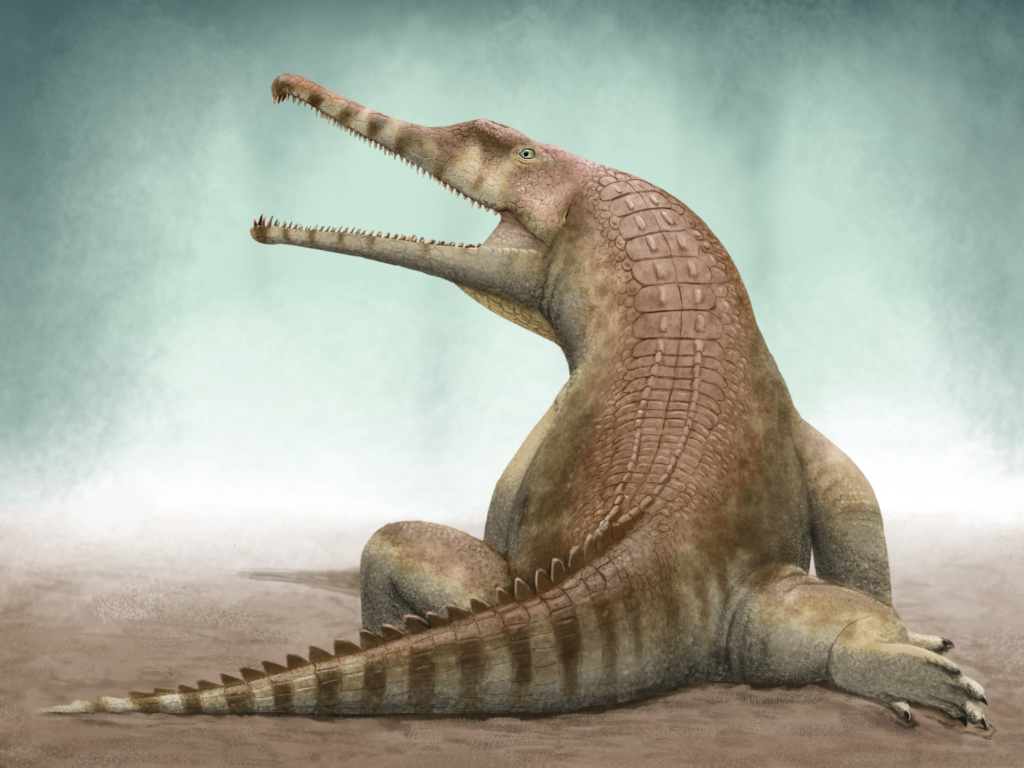
Close examination of modern birds and alligators reveals numerous features inherited from their archosaur ancestors that persist despite hundreds of millions of years of separate evolution. Both groups retain the diapsid skull with characteristic openings, though modified in birds for weight reduction. The scales on birds’ feet are remarkably similar to alligator scales, reflecting their common reptilian heritage. Both groups share unique immunological features not found in other vertebrates, including specialized antimicrobial peptides that protect against infections. Their cardiorespiratory systems show similar developmental patterns, with the four-chambered heart representing an ancestral archosaur innovation. Both groups also exhibit unidirectional airflow through parts of their respiratory systems, though birds have evolved this feature to a much greater extent with their unique air sac system. These shared features, often overlooked due to the dramatic differences between the groups, provide tangible evidence of their common evolutionary heritage and demonstrate how fundamental archosaur adaptations have been maintained even as these lineages diverged into radically different ecological niches.
Future Research Directions: Unanswered Questions

Despite tremendous advances in understanding the evolutionary relationship between birds and crocodilians, many fascinating questions remain unanswered. Paleontologists continue searching for transitional fossils that could illuminate the early divergence of the pseudosuchian and avemetatarsalian lineages during the early Triassic period. Developmental biologists are investigating how changes in gene regulation during embryonic development led to the dramatic anatomical differences between these lineages, with particular focus on the Hox genes and other developmental regulators. The evolution of endothermy in the dinosaur lineage leading to birds remains incompletely understood, with ongoing research using isotope geochemistry and bone histology seeking to pinpoint when and how this metabolic transition occurred. Comparative genomic studies between birds and crocodilians are identifying conserved non-coding elements that may control archosaur-specific traits. Additionally, new techniques in molecular paleontology hold promise for extracting biochemical information from fossils that could further illuminate the biology of extinct archosaurs. These active research areas ensure that our understanding of the shared heritage of birds and alligators will continue to deepen in the coming years.
Conclusion

The evolutionary connection between alligators and birds represents one of the most remarkable stories in vertebrate evolution. From their shared archosaur ancestors 250 million years ago, these lineages embarked on separate evolutionary journeys that led to dramatically different forms and lifestyles. Yet beneath these differences lie fundamental similarities in anatomy, physiology, reproduction, and genetics that reveal their common heritage. This relationship reminds us that evolution’s transformative power works within the constraints of ancestry, modifying existing structures rather than creating entirely new ones. Understanding the shared history of these fascinating creatures not only illuminates the past but also helps us appreciate the complex processes that have shaped Earth’s biodiversity through deep time.




